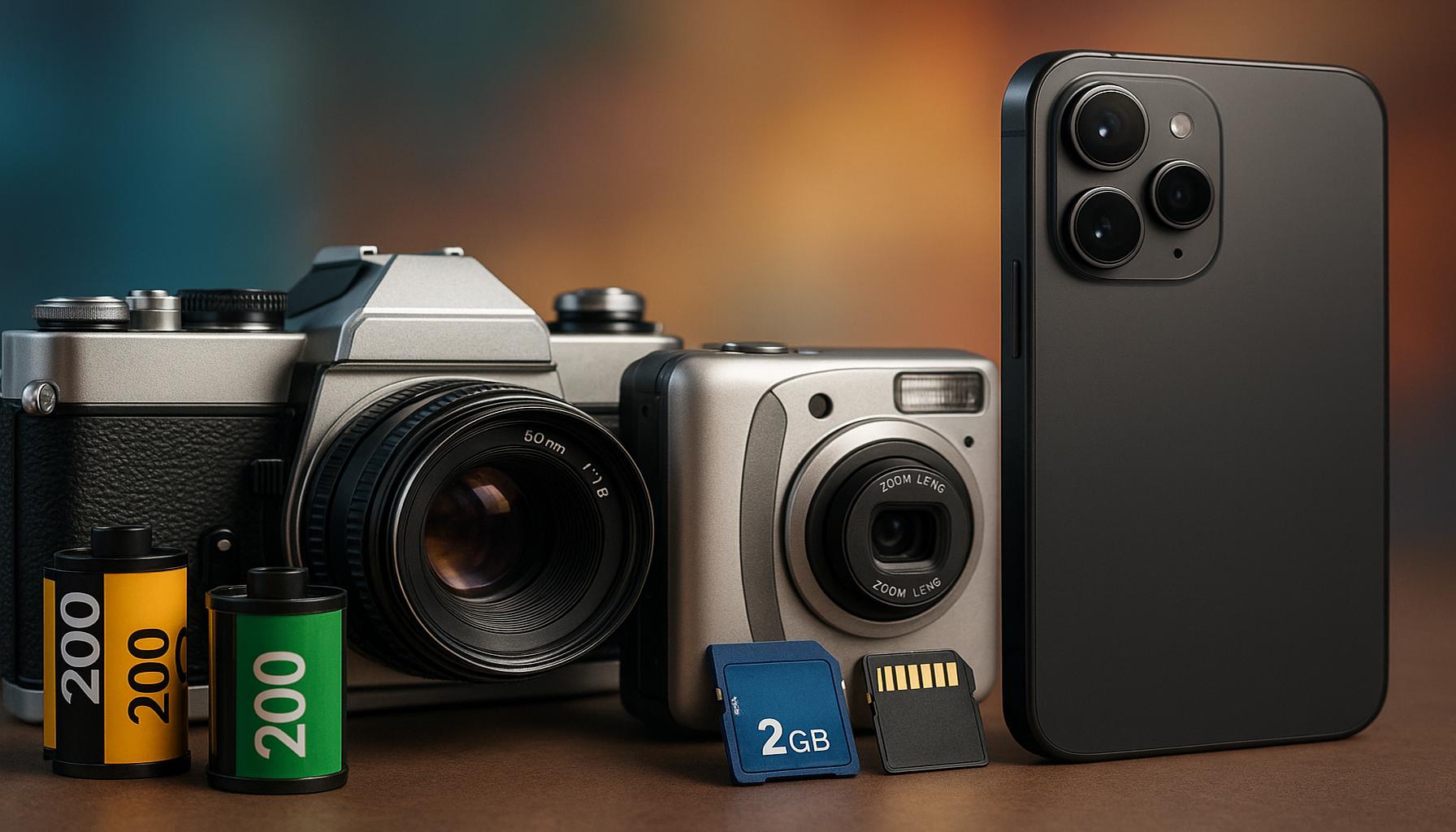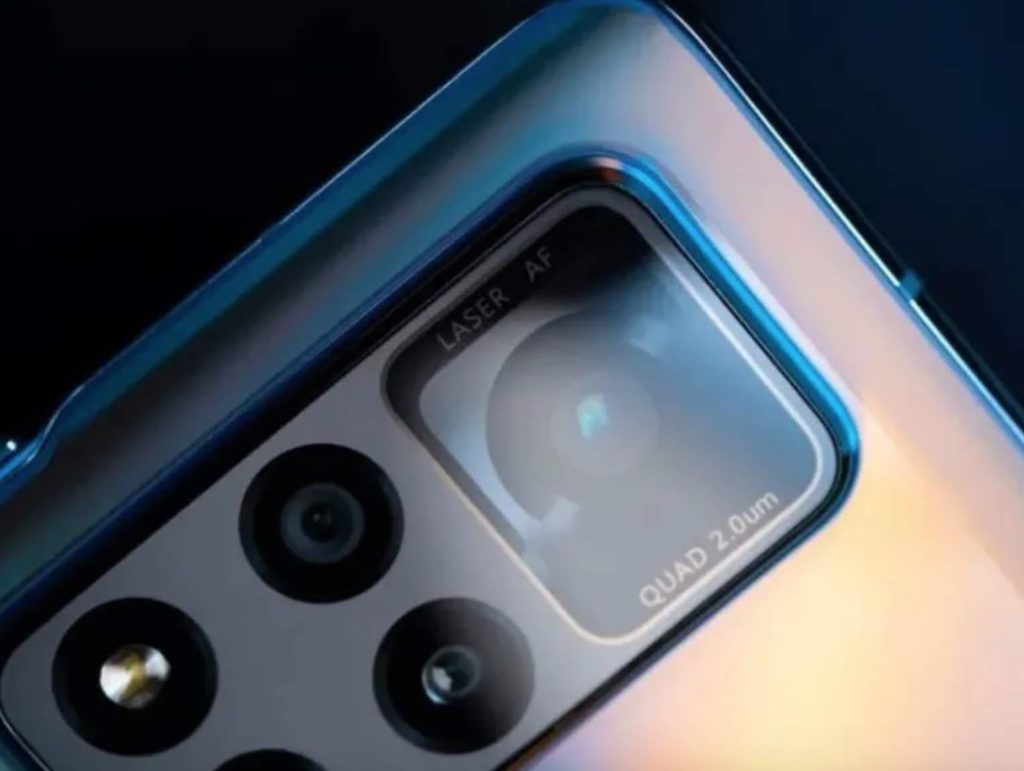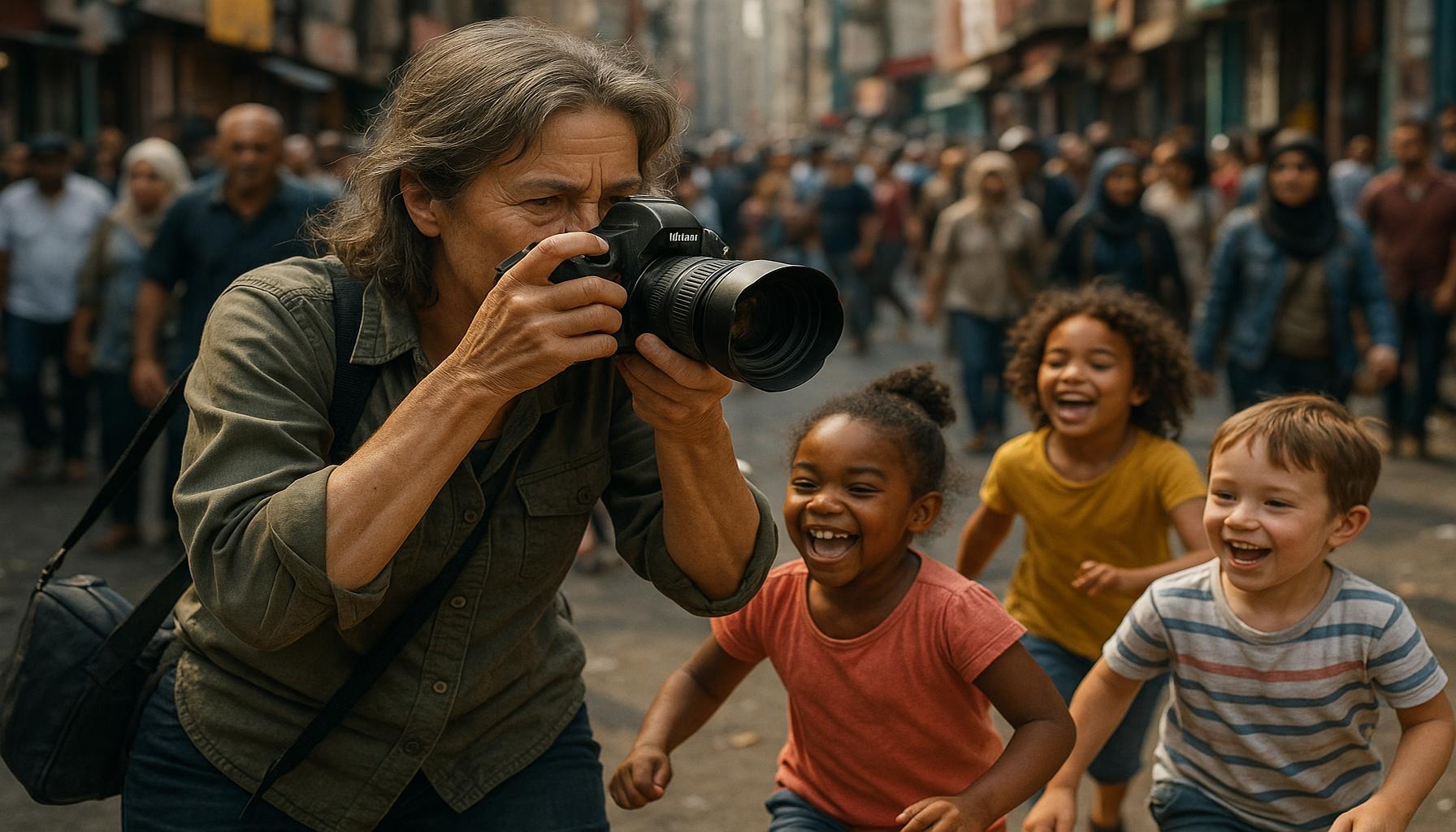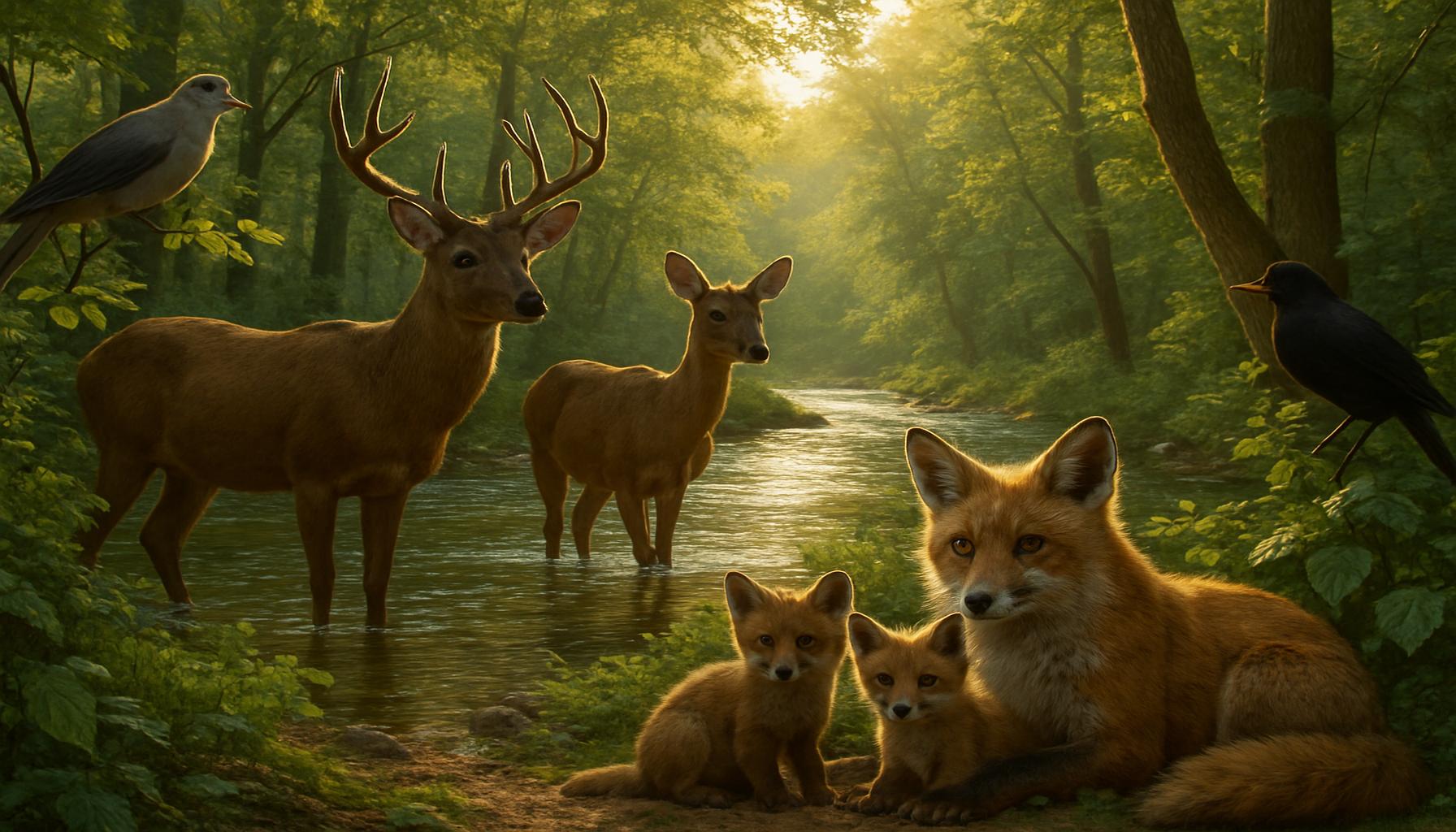The Evolution of Digital Photography: From Film Cameras to the Era of Smartphones

Introduction
Digital photography has undergone a remarkable transformation, revolutionizing the way we capture and share images. Once dominated by film cameras, the field now thrives in an era characterized by the ubiquity of smartphones. This evolution not only changed the technology behind photography but also altered our social relationships with images.
The journey of photography is marked by several key milestones that have shaped its current landscape:
- Film Cameras: The traditional choice that emerged in the 19th century, relying on physical film to capture moments. The iconic Kodak Brownie camera, introduced in 1900, made photography accessible to the masses, igniting a passion for capturing everyday life.
- Digital Cameras: The introduction of CCD sensors and memory cards in the late 20th century democratized photography, allowing for greater flexibility and instant results. With digital photography, photographers no longer had to wait for film development, marking a significant shift in how we interact with our captured moments.
- Smartphones: Modern devices combining powerful cameras with sharing capabilities revolutionized how we view photography. The introduction of the iPhone in 2007 democratized high-quality photography, encouraging even the casual user to experiment and share their visuals on platforms like Instagram and Snapchat.
As we delve into this captivating progression, we will explore several dimensions of digital photography:
- Technological advancements: Innovations that propelled the industry forward have included the development of image stabilization technologies, improved low-light performance, and software enhancements that allow for stunning photo editing directly on devices.
- Cultural impacts: Photography shapes and reflects our society in profound ways. With the rise of social media, images influence public opinion, drive social movements, and change marketing strategies. Memorable visual campaigns, such as the “Ice Bucket Challenge,” highlight the power of images in catalyzing change.
- Future trends: Speculations on where digital photography is headed next include the integration of artificial intelligence, which may streamline photo editing and even create compositions based solely on user preferences. Virtual reality and augmented reality technologies are also poised to transform the traditional viewing experience.
Join us as we navigate through the fascinating intersection of technology and creativity in photography. The story of digital photography is as much about the evolution of tools as it is about the human experience behind the lens. In a world saturated with images, understanding this transformation becomes essential for both aspiring photographers and casual enthusiasts alike.
DON’T MISS OUT: Click here to discover more

Technological Advancements in Digital Photography
The evolution from film cameras to digital photography represents a monumental leap in photographic technology, shaping not only how we take pictures but also how we experience and share them. At the heart of this revolution lays a series of technological breakthroughs that have permanently altered the landscape of photography.
In the late 20th century, the introduction of digital cameras marked the beginning of a new era. These devices, equipped with charge-coupled device (CCD) sensors, allowed photographers to capture images using digital data instead of film. This shift towards digital technology offered several advantages:
- Instant Gratification: Gone were the days of waiting for the film to be developed. Digital cameras enabled users to view their images immediately, providing instant feedback and the ability to retake shots as needed.
- Editing Flexibility: With the rise of software in the late 90s and early 2000s, photographers could easily edit and manipulate their images on computers. This increased creative control, allowing for artistic expressions that were previously difficult to achieve with film.
- Storage and Convenience: The advent of memory cards meant far greater storage capacities than film rolls, freeing photographers from the constraints of limited exposures. Compact and lightweight designs made it easy to carry multiple cards, allowing for countless shots without the need for developing or carrying extra rolls of film.
As digital technology continued to evolve, cameras became more sophisticated. Features such as auto-focus, image stabilization, and enhanced low-light capabilities made photography more accessible to amateurs while still catering to professional needs. These advancements democratized photography, empowering a wider audience to explore their creativity.
The introduction of smartphones further revolutionized the field. With high-quality cameras built into these devices, average users found themselves equipped with tools that rivaled professional cameras. The impact of smartphones on photography cannot be understated. Not only did they make quality photography accessible, but they also transformed how society captures, shares, and interacts with images.
Statistics reveal the magnitude of this transformation: As of recent studies, it is estimated that around 90% of photos taken today are captured on smartphones. Social media platforms like Instagram and Snapchat emphasize visual content, changing the way people communicate and experience life through a digital lens. These platforms have also made photography an integral part of personal and professional branding, shifting the focus toward a visually-driven culture.
As we move forward through this fascinating evolution, it’s crucial to recognize that technology continues to advance at breakneck speed. The capabilities of modern digital photography extend beyond just capturing moments; they also involve editing, sharing, and even creating entirely new forms of art. In our next section, we will delve into the cultural impacts of these technological advancements, exploring how images shape societal narratives and influence trends in various domains.
As we delve into the evolution of digital photography, it becomes increasingly evident how technological advancements have reshaped the way we capture and share our experiences. The transition from film to digital formats marked a significant turning point, gaining momentum with the release of the first consumer digital cameras in the late 1990s. These devices began to democratize photography, allowing enthusiasts and professionals alike to explore new creative possibilities without the constraints of film limitations.Digital photography offered immediate results—a stark contrast to the lengthy process of waiting for film to be developed. The ability to review images instantly not only enhanced the shooting experience but also sparked a revolution in learning and experimentation. In this era, photographers could adjust settings, retake images, and analyze their work on the go, paving the way for a more dynamic approach to capturing moments.The advent of smartphones further propelled this evolution, with integrated cameras that offered convenience and high-quality imaging capabilities. The merging of photography with communication devices transformed how we document our lives. With just a few taps, we can capture a fleeting moment, apply filters, and share our creations across social media platforms. This exponential growth in accessibility has led to a more visually driven culture, where photographs serve as a universal language.The technology behind smartphone cameras has also advanced significantly, incorporating advanced sensors, multiple lenses, and powerful image processing algorithms. This progress enables users to achieve professional-grade photography with devices that fit in their pockets. Features such as portrait modes, night vision, and artificial intelligence enhancements highlight this transformation, allowing anyone to produce stunning imagery.Moreover, the impact of social media on photography culture cannot be overstated. Platforms like Instagram and Snapchat not only serve as outlets for sharing images but also inspire a new wave of creative expression and collaboration. This sharing culture encourages photographers of all levels to showcase their work, receive feedback, and connect with a global audience.As we continue to navigate this ever-evolving landscape of digital photography, one key aspect remains constant: the passion for storytelling through images. Whether captured with a high-end DSLR, a compact digital camera, or a smartphone, photography persists as an enduring means of communication, connecting individuals across time and space. The journey from film cameras to smartphones illustrates not just technological advancements, but also the innate human desire to preserve and share memories, showcasing the transformative power of visuals in our lives.
| Category | Advantages |
|---|---|
| Instant Review | Immediate feedback allows photographers to learn and adapt quickly. |
| Accessibility | Smartphones make photography available to everyone, fostering creativity. |
In essence, the evolution of digital photography represents not just a shift in technology, but also a profound change in the way we connect with our world and express our individuality.
DISCOVER MORE: Click here to learn about the impact of collaboration among musicians
The Cultural Impact of Digital Photography
The shift towards digital photography sparked a profound cultural transformation that stretches far beyond the technical details of the cameras themselves. As the barriers to capturing and sharing images diminished, photography became a ubiquitous element of daily life. Today, almost everyone carries a camera in their pocket, fundamentally changing how we interact with the world around us.
With the ability to instantly take and share photos, the concept of memory has evolved. The archives of personal experiences, once contained within physical photo albums, now reside in cloud storage. This digital shift allows for greater accessibility; it’s not uncommon for people to scroll through thousands of images on their smartphones, reliving vacations, family gatherings, or simple moments of beauty on a whim. A study by Pew Research Center found that approximately 80% of Americans own a smartphone, and a significant majority use them for photography purposes, demonstrating how integral these devices have become in documenting lives.
The social implications of digital photography have manifested most vividly on social media platforms. Users actively participate in a global dialogue, sharing their artistic creations, personal milestones, and cultural experiences. The rise of platforms like Instagram and Pinterest has not only made photography a form of communication but also a source of inspiration and influence. A staggering 1 billion users frequent Instagram monthly, and millions of photos are shared every day, shaping visual culture and trends.
Moreover, the accessibility of photography has democratized artistic expression. While in the past, professional photography was often confined to those with expensive equipment and training, the capabilities of modern smartphones have empowered anyone to create compelling images. Many amateur photographers have gained recognition through social media, with some even monetizing their photography skills, transforming their passions into viable careers. A notable example is the rise of influencers—individuals who creatively curate photographic content that drives significant brand partnerships and marketing opportunities. Reports suggest that the influencer marketing industry is set to exceed $15 billion by 2022.
The integration of photography into our daily communication has also altered societal norms about privacy and self-presentation. With the advent of digital photography, particularly selfies, the concept of identity representation has taken center stage. Selfies have morphed into a cultural phenomenon, stimulating discussions about self-esteem, body image, and the pressures of social approval. Research indicates that nearly 55% of young adults regularly post selfies, raising questions about authenticity and how curated images affect individual perceptions of self-worth.
Furthermore, digital photography’s ripple effects reach into the realms of art, journalism, and marketing. The ability to share high-quality images in real-time has transformed storytelling in news media, enabling reporters to provide vivid imagery alongside their narratives. Art institutions are also adapting, with exhibitions that highlight the intersection of technology and creativity. Photography, once viewed as a separate medium, is now interwoven with contemporary artistic expressions.
As we witness the ongoing evolution of digital photography, it is essential to consider both its profound benefits and the complexities it introduces to modern society. The art of capturing moments has progressed significantly from the era of film cameras to the smartphone-dominated landscape we navigate today, underscoring the pivotal role that photography plays in our collective experience. As advancements in artificial intelligence and augmented reality emerge, it is fascinating to ponder what the future holds for photographers and enthusiasts alike.
DIVE DEEPER: Click here to uncover the power of your emotions through words
Conclusion
The evolution of digital photography, from the early days of film cameras to the omnipresent smartphones of today, marks a revolutionary journey that has reshaped the way we capture, share, and perceive imagery. As Pew Research Center highlighted, with the majority of Americans owning smartphones, photography has transcended professional boundaries, allowing anyone with a device to become a storyteller. The impact of this democratization is palpable, as individuals now actively participate in a global visual dialogue, fostering creativity and redefining artistic expression.
In tandem with this accessibility, we now navigate a complex relationship with photography that challenges traditional norms of memory, privacy, and identity. The prevalence of selfies stimulates ongoing conversations about self-representation and societal pressures, emphasizing the psychological dimensions of our always-connected world. Moreover, the significant role of images in journalism and marketing exemplifies how visual storytelling has become fundamental to our cultural lexicon, often eclipsing the written word.
As we move forward into an era defined by advancements in technology, such as artificial intelligence and augmented reality, it is essential to ponder the future of photography. Will we continue to see the medium evolve, further blending personal experiences with digital artistry? What new platforms will emerge to shape this vibrant landscape? As photography remains intricately woven into the fabric of our lives, understanding its trajectory will surely enhance our appreciation for both the images we create and those we encounter. The journey of digital photography continues, inviting exploration and innovation at every turn.



